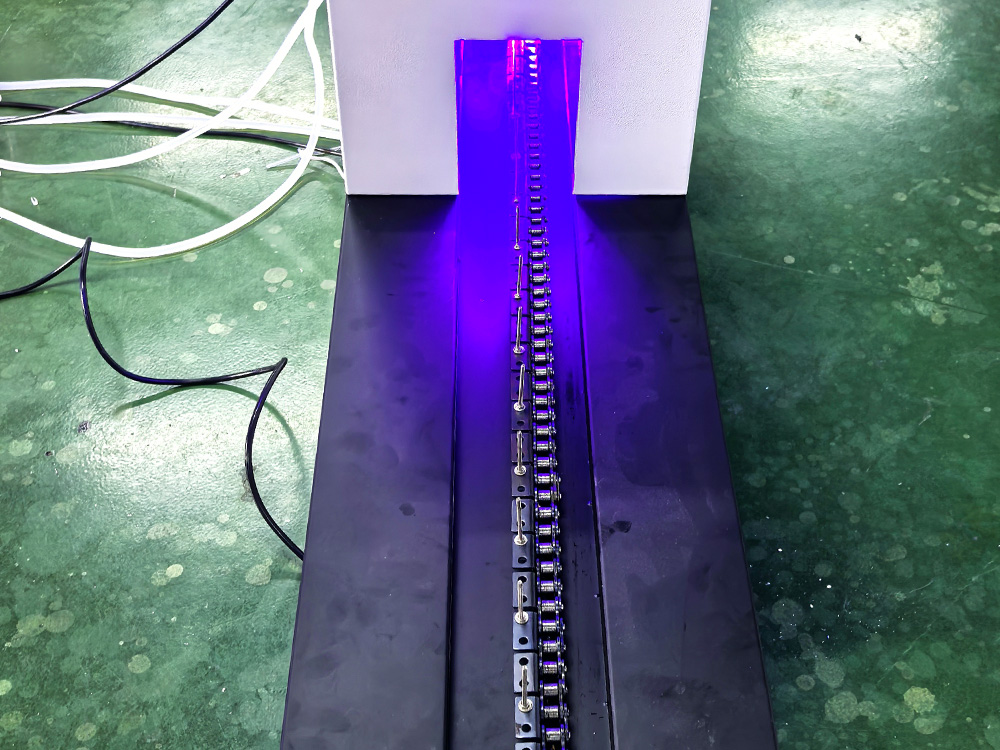Application differences of LED UV curing lamps with different wavelengths in the curing of trademark inks
News 2022-09-08
In the field of trademark printing, LED UV curing technology has become the mainstream choice to replace traditional solvent-based ink drying due to its characteristics of high efficiency, energy saving, environmental protection and safety. And different wavelengths of UV light sources have a significant impact on the ink curing effect. The following analysis is carried out from four typical wavelengths: 365nm, 385nm, 395nm and 400nm.
365nm (UVA band)
As the representative of long-wave ultraviolet light, the 365nm light source has strong penetration and uniform energy distribution, and is especially suitable for deep curing of hard substrates such as metal and glass. Its energy can activate traditional free radical photoinitiators and achieve rapid cross-linking in thick-film inks. However, this wavelength is easily absorbed by pigments such as yellow and red, which may lead to uneven curing. Therefore, in trademark printing, the 365nm light source is often used in scenarios that need to consider both surface and bottom curing, such as automotive parts labels or high-end cosmetics packaging.
385nm (near UVA/visible light transition zone)
This wavelength is close to visible light, and the energy is concentrated on the surface and has weak penetration. It is especially suitable for surface curing of flexible substrates such as plastic films and paper. Its advantage lies in being able to effectively reduce the oxygen inhibition effect and is suitable for cationic or hybrid photoinitiator systems, and it performs outstandingly in high-speed production lines. For example, food packaging labels require rapid drying and high gloss. The 385nm light source can ensure efficiency while avoiding heat deformation of the substrate. But it should be noted that dark inks (such as black and blue) have a low absorption rate for this wavelength and need to be combined with special photoinitiators to improve the curing effect.
395nm (near UVA/high energy zone)
As the longest near-ultraviolet light source in wavelength, 395nm has extremely high surface energy density and is sensitive to long-wavelength photoinitiators (such as acyl phosphine oxides), and the curing speed is extremely fast. This characteristic makes it an ideal choice for high-speed production lines, especially for packaging materials sensitive to migration such as children’s toy labels. However, excessive energy may cause excessive cross-linking on the ink surface, leading to problems such as embrittlement or decreased adhesion. Therefore, when using it, the power and irradiation time need to be strictly controlled to balance curing efficiency and quality.
400nm (visible light edge)
This wavelength is already close to the visible light range and has low energy. It needs to rely on efficient photoinitiators or high-power equipment to achieve effective curing. Its greatest advantage lies in its adaptability to ultraviolet-sensitive substrates (such as heat-sensitive paper), which can significantly reduce the yellowing phenomenon of ink. In special application scenarios, such as art reproductions or high-end anti-counterfeiting labels, the 400nm light source can not only meet the curing needs but also minimize the damage of ultraviolet rays to the substrate.
Selection strategy and practical suggestions
In practical applications, the choice of wavelength needs to comprehensively consider ink formulation, substrate characteristics, production efficiency and cost factors. Free radical inks are preferably matched with 365nm light sources, while cationic systems are more suitable for 385nm; hard substrates such as metal and glass need deep curing, while flexible materials such as plastic and paper focus on surface treatment. High-speed production lines can choose 385nm or 395nm to improve efficiency, and low-speed lines can reduce energy consumption through 365nm. With the continuous progress of LED technology, future UV curing light sources will develop in the direction of more accurate wavelength control and intelligent regulation, providing more efficient and environmentally friendly solutions for the trademark printing industry.


